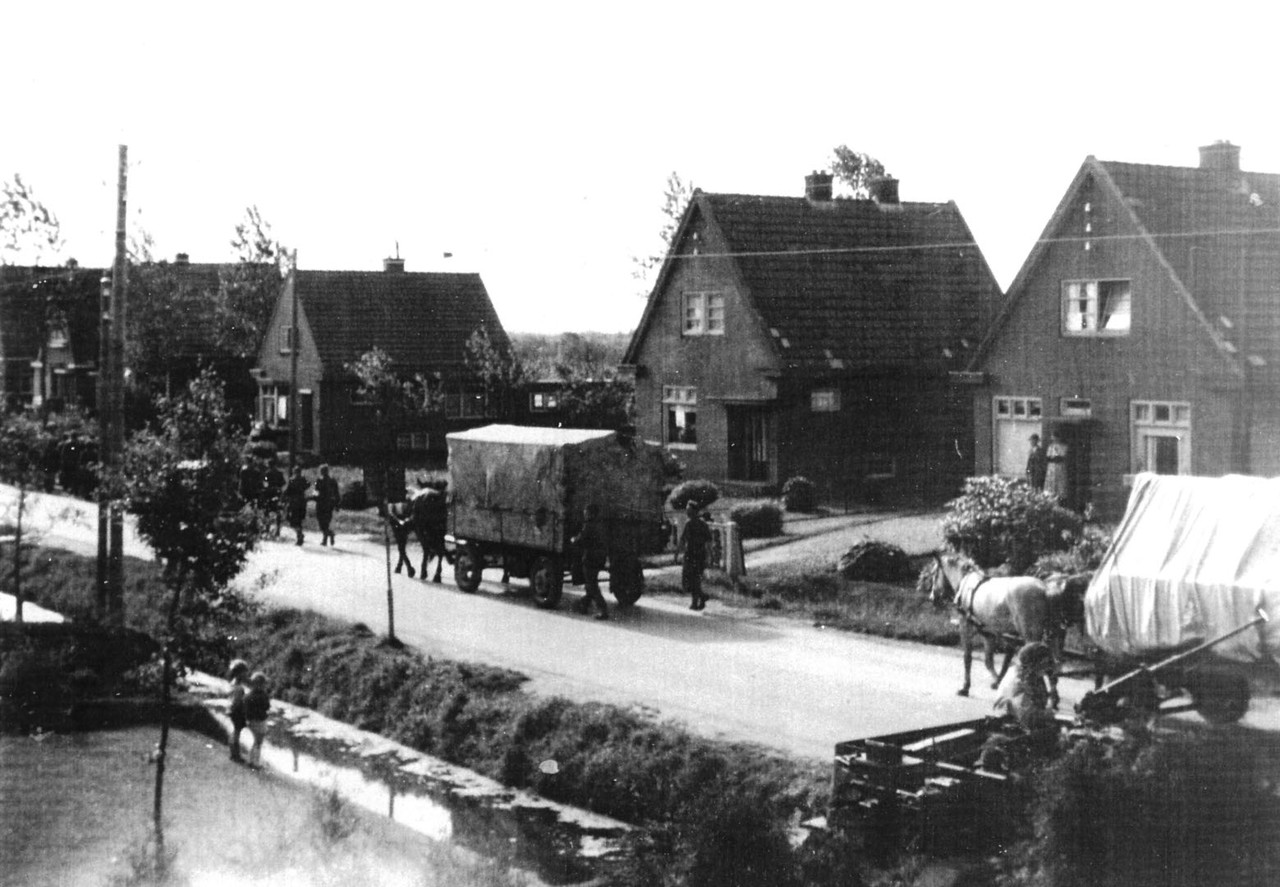In the early morning of Saturday, 14 April 1945, resistance fighters from the Binnenlandse Strijdkrachten (BS) had set up their headquarters at Café Gorter, awaiting the arrival of Canadian forces. At around 05:30, a report arrived that a cart drawn by two horses was entering the village from Mounleane, carrying retreating German soldiers and their Dutch accomplices. It was impossible to estimate exactly how many there were in the early morning light. Later, it turned out to be about 45 armed soldiers.
Commander Lourens ordered his twelve men to take up their positions in the foxholes by the road. When the vehicle approached the command post, Lourens shouted: ‘Surrender!’ They did not. Instead, a firefight broke out. It is unknown who fired first. The first to be killed were the two horses. After that, it was an unequal battle: against a superior force of trained soldiers, the resistance fighters did not stand a chance.
The front of Café Gorter was shot to pieces with machine guns and Panzerfaüste (anti-tank projectiles). The commander decided to withdraw his men, but for some, it was impossible due to the heavy fire. Those who could searched for a safe place to hide. The German forces entered the café and barn and freed 40 people whom the BS had imprisoned.
Not long after, Canadian combat vehicles approached from Mounleane. These were two units of the B Squadron Royal Canadian Dragoons. They entered the village firing their weapons, and the battle was quickly decided. Within ten to twenty minutes, the German forces had their arms raised and were disarmed. At 06:00 that morning, Ureterp was liberated.
There was a brief firefight near the church on Selmien, during which a stray bullet fatally struck young Gerard Hempenius on Tsjerkeleane. Meanwhile, the escaped prisoners of the BS were re-arrested and the sad toll could be assessed. Reluctantly, the first residents of Ureterp dared venture onto the streets. What they saw was horrific: the Weibuorren was in complete chaos. Four dead BS members hung halfway in the foxholes, and three dead German soldiers, nine moaning wounded, and four shot horses lay in the street. A little further on, a fourth dead German soldier was found in a ditch.
The Canadian troops had captured 26 opponents, plus four Landwachters (members of the pro-Nazi Dutch paramilitary organisation), who had been overpowered the day before at Ureterp-Vallaat. These 30 were escorted on foot to Donkerbroek by the remaining BS members and handed over to the authorities upon arrival.
Three Royal Canadian Dragoons were later awarded military honours for, among other things, their courageous actions in Ureterp: Major Jean Prosper Gautier received the Distinguished Service Order (DSO), Lieutenant John Parkin Best received the Military Cross (MC), and Sergeant Robert Frederick Davidson received the Military Medal (MM).
50 years later, a monument was erected in Ureterp by the Local Interest Association in memory of the four victims of the shooting at Café Gorter on 14 April 1945. The names of the victims were Jan Lammert van der Broek, Aalzen de Jager, Cornelis Tump (all resistance fighters) and the young Gerard Hempenius. The three resistance fighters were buried with military honours on 18 April 1945.
